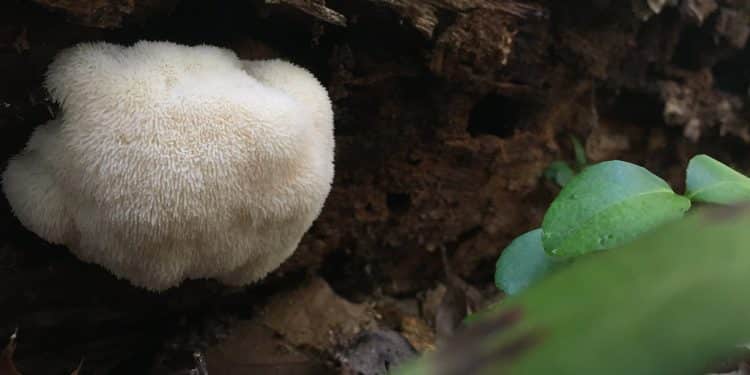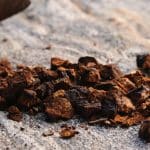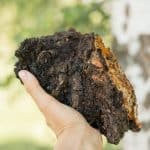Mushroom enthusiasts often seek the best methods, ensuring these culinary delights are safe and enjoyable to consume. Understanding how to clean lions mane mushrooms without damaging their unique structure is crucial for maintaining flavor and texture. They recognize the importance of preserving the integrity of this toothsome fungus while removing any debris or contaminants. This post provides clear instructions tailored for those aiming to master the cleaning process effectively, utilizing simple words and vocabulary that resonate with both novices and seasoned foragers alike.
Understanding Lion’s Mane Mushrooms
Lion’s mane mushrooms are known for their unique, shaggy appearance. They resemble a white pompom or the mane of a lion, hence their name. This distinctive look is not just for show; it affects how mushroom enthusiasts clean them. The mane mushroom has a delicate structure with many crevices and spines. These features trap debris and require careful cleaning.
The process differs between wild-harvested and cultivated varieties. Wild mushrooms often have more dirt and organic matter clinging to them due to their natural growing conditions. Cultivated ones are typically cleaner but still need attention before consumption. Identify characteristics:
-
White, globe-shaped fungi;
-
Long, dangling spines rather than gills;
-
Soft texture.
Mushroom enthusiasts should recognize that the way they handle these mushrooms will impact their final dish’s quality and flavor. Overwashing can lead to sogginess, while insufficient how-to-clean the lion’s mane might leave grit behind.
Preparing for the Cleaning Process
Before mushroom enthusiasts can enjoy the health benefits of Lion’s Mane mushrooms, they must clean them properly. It begins with gathering the necessary tools for cleaning. A soft brush is often ideal to remove any dirt without damaging the delicate structure of these fungi. Sometimes, all that’s needed is a quick flip or gentle shake to dislodge debris.
Mushroom enthusiasts should not soak Lion’s Mane in water as it could absorb moisture and become soggy. Instead, if bits of debris are stubbornly clinging on after brushing or wiping, they can rinse them quickly under running water and pat dry immediately afterward.
The steps one takes in preparing these healthful fungi matter greatly because proper how to clean lions mane ensures that none of its natural flavors are lost during cooking and that its texture remains intact—both key elements in savoring Lion’s Mane at its best.
Dry Cleaning Technique for How to Clean Lions Mane
Mushroom enthusiasts often prefer the dry cleaning technique for lion’s mane mushrooms due to its effectiveness in preserving their delicate structure. To begin, they should select a soft brush or cloth, which will be gentle on the mushroom’s surface. This method involves lightly brushing off any dirt or debris without applying much pressure.
During this process, it is crucial to handle the mushrooms as little as possible. Excessive handling can damage the intricate, tooth-like spines of lion’s mane mushrooms. They should cradle each piece carefully while dusting away unwanted particles. A soft-bristled paintbrush can reach into crevices effectively.
Gentle Washing Method for Freshness
After removing loose debris with the dry cleaning technique, mushroom enthusiasts may opt for a gentle wash. This method ensures the lion’s mane mushrooms maintain their freshness and texture. It is crucial to apply minimal water when washing these delicate fungi. A light mist or quick dip in water can dislodge any remaining particles without harming the mushroom.
A proper way involves holding each piece under running tap water just long enough to rinse away any dirt. Then, lay out on paper towels and gently dab with another towel until most of the moisture is absorbed. This approach helps preserve both their pom-pom-like appearance and subtle flavors.
Drying Lion’s Mane Mushrooms Post-Cleaning
After the gentle washing process, mushroom enthusiasts must focus on drying their lion’s mane mushrooms. It is crucial to pat them dry immediately. This helps prevent excess water from soaking into the delicate fibers of the fungi. They should use a clean towel or paper towels to absorb moisture gently.
Next, they need to lay out the mushrooms on an absorbent material such as a kitchen towel or a rack lined with paper. The surface should be flat and allow air to reach all sides of the mushrooms for even drying. Ensuring proper air circulation is key in this step. Mushroom enthusiasts can place a fan nearby to move air around the room, speeding up the drying process without applying direct heat which could damage their texture and flavor.
Storing Cleaned Lion’s Mane Mushrooms
After mushroom enthusiasts have dried their lion’s mane mushrooms, proper storage is crucial to maintain freshness. They should refrigerate the cleaned mushrooms in breathable containers. This allows for air circulation, which is vital in preventing the accumulation of moisture that could lead to spoilage. Breathable materials such as paper bags or cloth-covered bowls are ideal options.
To ensure that these curative mushrooms retain their quality, it is important to keep them at optimal humidity levels. The refrigerator’s crisper drawer typically offers a suitable environment for this purpose. However, enthusiasts must avoid placing them in airtight packaging as it can trap moisture and induce spoilage. Instead, they should opt for loose wrapping that permits airflow while still protecting the delicate fungi from contaminants.

Tips for Preserving Texture and Flavor
Mushroom enthusiasts know that the texture and flavor of how to clean lions mane are key to their culinary appeal. To maintain the delicate texture, they handle these fungi with care. Rough handling can bruise the mushroom, leading to a less desirable consistency when cooked. They clean them as close to cooking time as possible, which helps in retaining their natural flavor. This ensures that once added to recipes, the mushrooms impart a fresh taste.
Storing lion’s mane mushrooms properly is crucial for preserving their quality. Food connoisseurs store them away from strong odors because these mushrooms can absorb flavors from their environment, altering their own subtle taste. The right storage method keeps unwanted moisture at bay, preventing sogginess which could ruin both texture and flavor when it comes time to cook.
Incorporating Clean Lion’s Mane into Recipes
After ensuring the lion’s mane mushrooms are clean, mushroom enthusiasts can focus on showcasing their unique flavor and texture. Simple recipes often work best to highlight the delicate taste of these fungi. A classic approach is to slice them and incorporate them into a light pasta dish with garlic, olive oil, and fresh herbs. This allows the subtle seafood-like flavor of the lion’s mane to shine through without being overshadowed by heavy sauces.
Another popular option is preparing a lion’s mane crab cake, using the shredded texture of the mushroom as a stand-in for crab meat. Combined with breadcrumbs, seasoning, and just enough binder to hold it together before pan-frying results in a delicious vegetarian alternative that closely mimics traditional seafood cakes. For those who enjoy heartier dishes:
-
Sautéing sliced lion’s mane with onions adds depth while preserving its tender consistency;
-
Roasting whole clusters brings out an almost meaty texture perfect for serving alongside roasted vegetables or as part of a plant-based roast dinner.
Cooking methods like sautéing or roasting not only enhance their chewiness but also add caramelization which intensifies their natural flavors. It’s important they use techniques that don’t introduce too much moisture which can make them soggy.
When pairing ingredients, it’s crucial to choose those that complement rather than compete with the mushroom’s profile. Light seasonings such as thyme or tarragon work well, as do mild cheeses like goat cheese when making stuffed mushrooms. They should avoid strong spices or acidic components that might overpower its taste.
Closing Thoughts
Mushroom enthusiasts recognize the importance of properly cleaning lion’s mane mushrooms to maintain their unique texture and flavor. The methods outlined, from dry brushing to gentle washing, aim to preserve the integrity of these delicate fungi. They understand that the drying and storage techniques are crucial for prolonging the mushrooms’ shelf life and ensuring their culinary value. By adhering to the discussed tips on how to clean lions mane, one can seamlessly integrate these mushrooms into a variety of healthful recipes.
As they continue to explore the gastronomic potential of lion’s mane mushrooms, it is imperative to remember these guidelines for optimal preparation. Mushroom enthusiasts are encouraged to share their experiences and culinary creations, fostering a community of informed and passionate mycophiles. For further guidance on mushroom foraging and preparation, they may seek reputable resources that adhere to Google E-E-A-T standards.
You can find our favorite capsules, powders, and tincture’s on the following pages of our website and learn more about each individually:
The Best Lion’s Mane Supplement
Additional resources:
How long does it take for lion’s mane mushroom to work?
How to cook lion’s mane mushroom
Learn More:
How to Grow Lion’s Mane Mushrooms
Growing Mushrooms in Straw: A Quick How-To
Updated 10/10/2022















